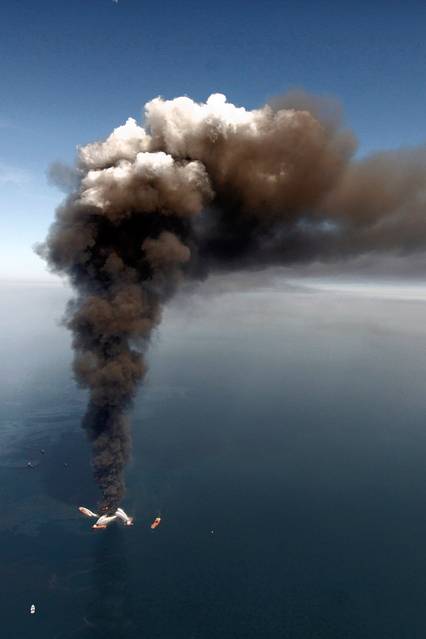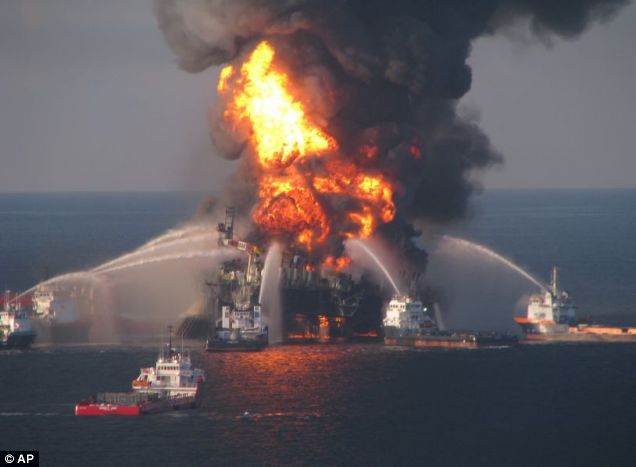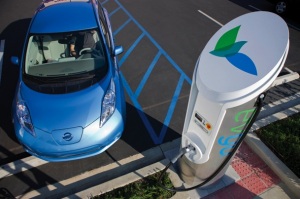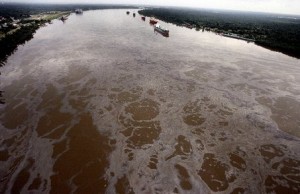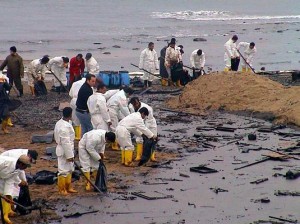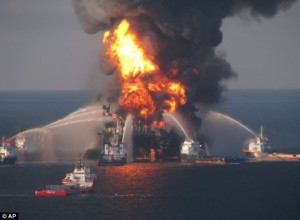
Ships trying to Extinguish the Flames at the Deepwater Horizon Rig
The unfolding disaster at the Deepwater Horizon rig in the Gulf of Mexico, which promises to be an environmental catastrophe, (click here) the recent disasters at the Upper Big Branch coal mine in West Virginia, and the Kingston, Tennessee fly ash retention pond demonstrate that fossil fuels are dirty and dangerous. Safety and environmental protection are expensive and cannot be guaranteed. The oil will adversely effect fisheries in the Gulf for years. If the oil gets into the Gulf Stream, it will curl around Florida and flow up the coast hitting Georgia, South Carolina, North Carolina, Virgina, Maryland, Delaware, Pennsylvania, New Jersey, New York, Rhode Island, Massachusetts, New Hampshire, and if it flows around the Long Island Sound, Connecticut – all the original 13 states, then Maine and the Atlantic Provinces of Canada.
Rather than harnessing the Gulf Stream to push pollution from the Gulf of Mexico up the Atlantic coast of the United States, we should harness the Gulf Stream for clean renewable energy. (Here’s how.)
Solar and wind, which harness natural processes rather than consume natural resources, provide power without fuels, and without waste: with no arsenic, carbon dioxide, lead, mercury, methane, and other toxins, greenhouse gases or radioactive waste. These systems enable us to meet our needs and allow future generations to meet their needs – and flourish.
Rather than clinging to the dirty and hazardous infrastructure of the past, we must build the clean, renewable, and sustainable infrastructure of the future.
Cape Wind and the Staten Island Ferry solar array and the thousands of other solar and wind projects here in the U. S. and elsewhere on the globe are, to paraphrase Buzz Aldrin and Neil Armstrong, “small steps … yet giant leaps for mankind.”
This post is the First Installment of a series that will follow the unfolding catastrophe in the Gulf of Mexico.
—
The index is below:
- Fossil Fuels and a Walk on the Moon, May 3, 2010.
- Drill Baby Drill or Drill Baby Oops, May 7, 2010.
- The Magnitude of the Spill, May 15, 2010.
- One Month After The Spill BP Siphoning 3,000 Barrels Per Day, May 20, 2010.
- Deep Water Horizon – The Chernobyl of Deepwater Drilling?, June 2, 2010.
- The Deepwater Horizon: 40,000 Barrels Per Day or 70,000, June 13, 2010.
- The Deepwater Horizon After the Macondo Well Explosion, June 19, 2010.
- Deepwater Horizon – Bombs and Hurricanes, July 1, 2010.
- Like a Bad High School Math Problem, July 14, 2010.
- Crisis Management and the Gulf Oil Spill, July 16, 2010.
- The Deepwater Horizon: The Good, The Bad, and The Ugly, October 7, 2010.
